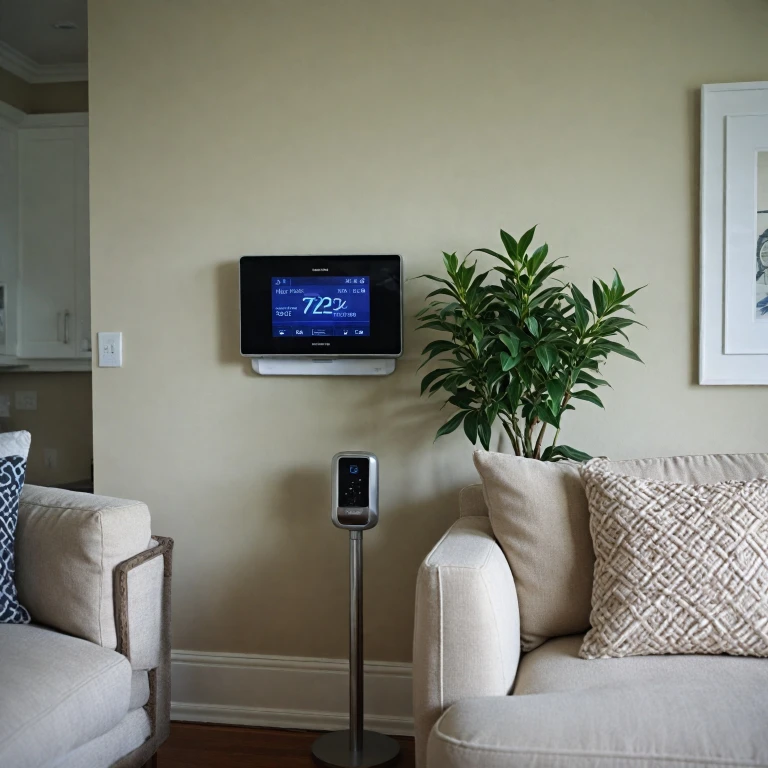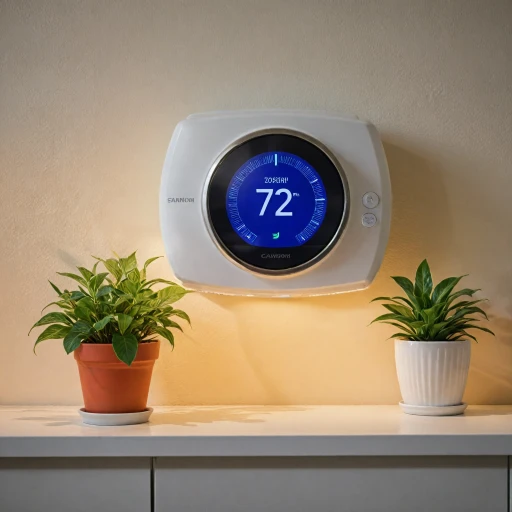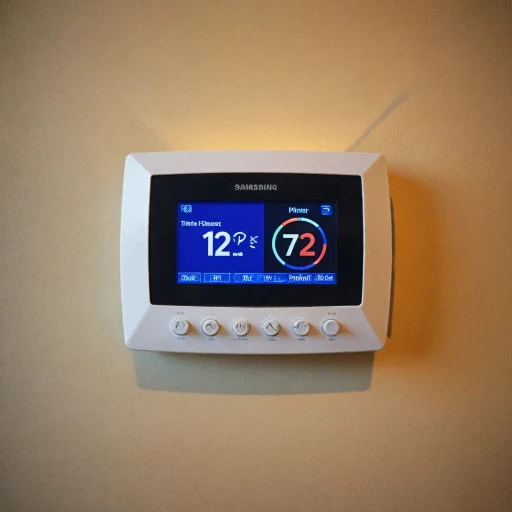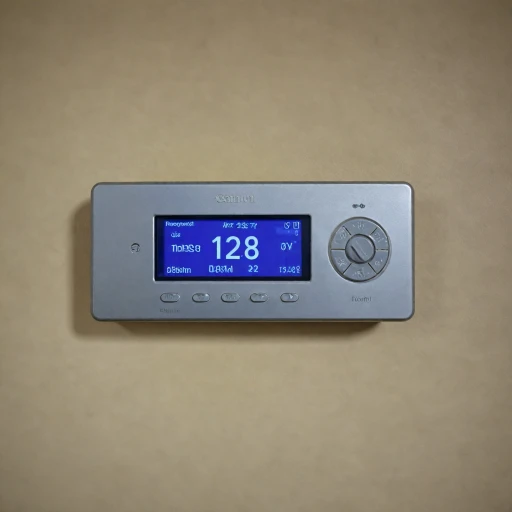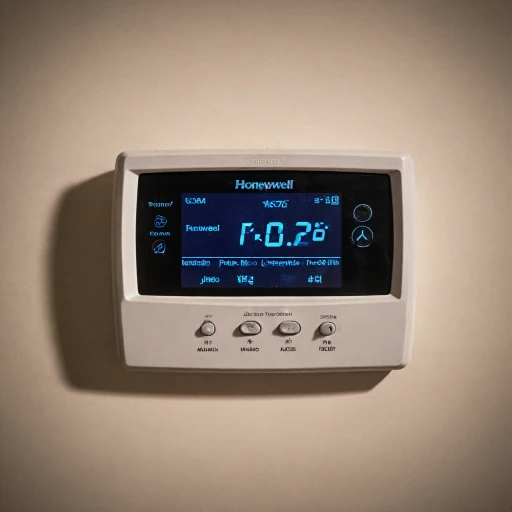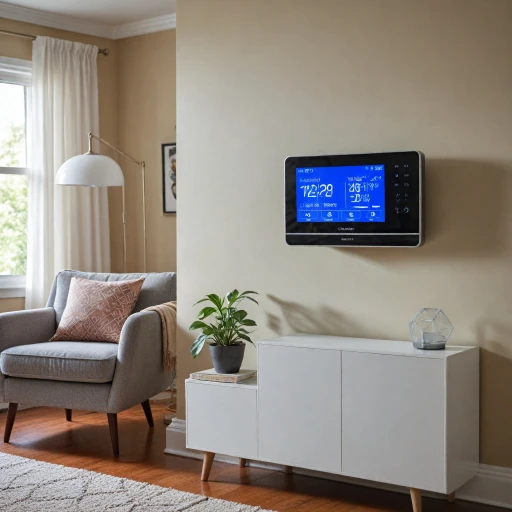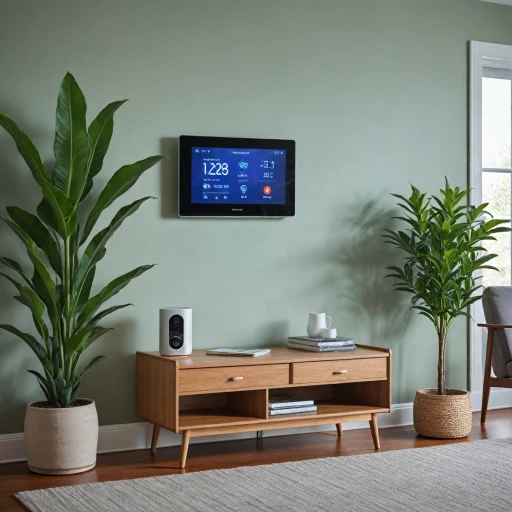
Understanding Smart Thermostats
The Basics of Smart Thermostats
Smart thermostats are transforming how we manage our home heating systems, including those with electric baseboard heaters. Unlike traditional thermostats that require manual adjustments, these digital thermostats can connect to your home’s wifi networks, allowing you more control over your heating systems from anywhere through an app on your smartphone. Smart thermostats provide a modern approach to managing your temperature settings day by day. With the ease of a programmable thermostat, adjustments can be made not just from the main control panel, but remotely, saving energy and offering maximum efficiency for your electric heating systems. Popular models such as the Mysa smart thermostat and the ecobee smart thermostat cater specifically to electric baseboard heating, optimizing energy savings and reducing costs. Understanding these features is key to grasping how smart thermostats can greatly enhance your daily life. Explore our detailed guide on the benefits of automatic changeover in smart thermostats for a more in-depth insight into this technology.Tailoring to Your Heating Setup
One of the significant advantages of incorporating a smart thermostat into your home is the advanced capability to tailor it to various heating systems, including fan forced and baseboard heaters. Understanding the compatibility with your existing wires and voltage levels is essential, ensuring that your new thermostat baseboard models are suited for your electric heating setup.Beyond Direct Controls
A common wire is often required for the functioning of many modern smart thermostats, which offers a steady power source. However, not all baseboard heaters come equipped with this. It’s advisable to verify how your existing heating system aligns with smart thermostat specifications before purchase to ensure a smooth transition.Compatibility with Baseboard Heaters
Ensuring Compatibility with Your Electric Baseboard Heaters
Smart thermostats are gradually establishing their place in modern homes due to their efficiency and convenience. However, before jumping into the investment, it's crucial to understand their compatibility with your existing heating systems, specifically electric baseboard heaters.
Baseboard heaters operate differently from traditional central heating systems. Here are a few key aspects to consider when assessing compatibility:
- Voltage Levels: Many baseboard heaters work on high-voltage systems (120V or 240V), which may not always align with smart thermostats designed for standard low-voltage systems. Ensure your chosen smart thermostat can handle the high voltage.
- Wiring Configuration: Check the wiring layout of your current system. Some smart thermostats require a common wire (C-wire) for power. Devices like Mysa smart thermostats are specifically engineered to work without a common wire in high-voltage settings.
- Technology and Control: Look for thermostats that offer comprehensive control, not just through manual settings but also through a robust app interface. The app should allow you to manage temperatures anytime, fostering energy savings and customized comfort.
- Manufacturer Recommendations: Review the recommendations of both the heater and thermostat manufacturers. Brands like Ecobee may offer models designed to integrate smoothly with electric heating systems, providing added assurance.
For insights on optimizing the use of smart thermostats with electric baseboard heating systems, check out the detailed discussion here.
Integrating a smart thermostat with your baseboard heat setup requires careful consideration, but the benefits of improved energy efficiency and ease of control make it a worthy endeavor. In the next section, we will delve into how smart thermostats enhance energy efficiency, ultimately leading to cost savings and environmental benefits.
Energy Efficiency Benefits
The Advantages of Smart Thermostats for Energy Efficiency
Smart thermostats have become a revolutionary tool for managing electric baseboard heating, offering significant energy savings and enhancing the overall efficiency of heating systems. These devices provide a range of features designed to optimize temperature control, reduce waste, and ultimately decrease utility bills. One of the primary benefits of smart thermostats is their ability to learn your schedule. By analyzing your daily routine, these thermostats automatically adjust the temperature to fit your needs, ensuring comfort when you're home and savings when you're not. This "programmable thermostat" capability helps in reducing unnecessary heating or cooling during the day when your home might be empty. Additionally, smart thermostats can be integrated with other smart home technologies. For instance, features like "wifi connectivity" allow you to control and monitor your heating systems remotely through a "smartphone app." This means you can adjust the temperature from anywhere, providing both convenience and potential energy savings. Many smart thermostats are designed to be "compatible systems" for electric baseboard heaters, ensuring efficient "temperature control" without needing to replace existing heaters. Popular models, such as Mysa smart and Ecobee smart thermostats, are tailored for "high voltage" systems, making them suitable for electric heating and baseboard heater operations. By managing energy usage more efficiently, these thermostats help in reducing carbon footprints and contribute to environmental sustainability. The investment in smart thermostat technology often leads to noticeable energy savings, allowing homeowners to save money over time and enjoy a more comfortable living environment. However, it is important to ensure that your smart thermostat is "compatible" with the existing "thermostat baseboard" systems before installation. For those looking into compatibility, understanding more about a "two-stage thermostat" or considering consultation on "any potential issues" is advisable. For those experiencing issues where "the AC stays off" even though the thermostat clicks, it is worth investigating potential underlying problems that may require professional assessment. For more detailed insight on such issues, you can read further at troubleshooting common thermostat issues.Installation and Setup Tips
Getting Started with Your New Device
Once you've selected a smart thermostat that's compatible with your electric baseboard heating system, the next step is installation and setup. Smart thermostats, like the Mysa smart thermostat, offer energy savings and enhanced control, but it's essential to approach installation with a clear understanding of your specific system requirements.
Assess Your Wiring Needs
Start by reviewing the wiring requirements for your chosen thermostat. Many smart thermostats for electric baseboard heaters require a common wire (C-wire) to function correctly. If your current setup lacks a C-wire, you might need an adapter or assistance from a professional. It's crucial to ensure your wiring is compatible with the thermostat's voltage specifications.
Follow the Installation Instructions
Referencing the manufacturer's instructions is key. Whether you're installing a thermostat baseboard unit or a fan-forced heater-compatible device, following the step-by-step process can prevent common pitfalls and ensure a smooth setup. Avoid skipping steps to maintain the integrity of your heating and cooling systems.
Connect to WiFi and App
Once the hardware is in place, connect your device to your home WiFi network. Most smart thermostats come with an app, allowing for straightforward remote control of the temperature settings. Input your preferences, program daily schedules, and explore energy-saving options for optimization.
Calibration for Accuracy
After installation, it's important to calibrate your smart thermostat. This ensures that the readings and adjustments are precise, allowing your heating systems to function efficiently. For electric baseboard heaters, initial calibration can help in accurately maintaining desired temperature levels throughout the day.
Prepare for the Unexpected
Occasionally, issues can arise post-setup. Having basic troubleshooting knowledge can be invaluable. For more in-depth guidance, consider checking out resources on resolving digital thermostat issues or consult with a professional if things go wrong.
Popular Smart Thermostat Models
Exploring Top Picks for Smart Thermostats
When selecting the ideal smart thermostat for electric baseboard heaters, several models stand out due to their compatibility and features. The choice largely depends on the specific needs of your heating system and personal preferences. Here are a few popular options that are worth considering:- Mysa Smart Thermostat: This thermostat is specifically designed for electric baseboard heaters. With its sleek design and user-friendly app, Mysa offers precise control over temperature settings. It integrates seamlessly with WiFi, allowing you to manage your heating from anywhere at any time. A highlight of the Mysa smart model is its focus on energy savings, ensuring you reduce your electricity bills effectively.
- Ecobee Smart Thermostat: Known for its versatility, the Ecobee is often associated with systems like heat pumps and fan-forced electric heating. While primarily famous for central air systems, the Ecobee line can be adapted for electric baseboard use with proper setup. They excel in energy management, offering detailed temperature reports and recommendations for better energy efficiency.
- Programmable Thermostats: If you prefer a more traditional approach, modern programmable thermostats designed for electric baseboards can be a wise choice. These digital thermostats allow you to set specific temperatures for different days and times, optimizing comfort and reducing energy usage.
Troubleshooting Common Issues
Key Troubleshooting Tips for Smart Thermostats
Smart thermostats, like all modern tech, can occasionally present challenges. When integrated with electric baseboard heaters, these common issues and solutions can help maintain optimal performance:
- No Response from the Thermostat: Ensure that power is reaching the thermostat. Check for proper wire connections, especially the presence of a common wire, which may be required for certain models.
- WiFi Connectivity Issues: Make sure your home WiFi network is working properly and is compatible with your smart device. Verify that the smart thermostat is within range of your router for seamless communication.
- Inaccurate Temperature Readings: Verify the placement of your thermostat. It should not be in direct sunlight or near any heat-producing appliances. Adjust the calibration settings within the app to fine-tune accuracy.
- App Malfunctions: Regularly update the firmware of your thermostat and the app installed on your smartphone to ensure compatibility and improved function.
- Heater Does Not Turn On/OFF: Confirm that the smart thermostat is properly configured with your heating systems and that the device is compatible with electric baseboard heaters. Certain systems like the Mysa smart thermostat are specifically designed for baseboard heater compatibility.
- Intermittent Issues or Unexpected Behavior: Resetting the smart thermostat to factory settings can often resolve persistent issues, but remember to back up any settings or preferences beforehand.
With proper installation and understanding of potential complications, smart thermostats can significantly enhance energy efficiency when controlling electric baseboard heating. New-age models like the ecobee smart thermostat offer advanced features to optimize your home's energy savings while providing a comfortable environment. These steps can help you troubleshoot efficiently, allowing your smart devices to operate seamlessly and keep you in control of your climate.
